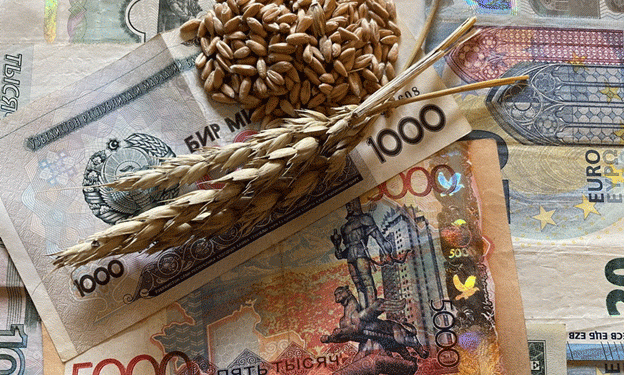As winter wanes, Kazakhstani farmers are strategizing for the 2025 agricultural season, focusing on crop selection, investment per hectare, financing for field operations, and effective summer practices. The Ministry of Agriculture has outlined a spring sowing plan covering 23.8 million hectares, an increase of 0.5 million hectares from the previous year. This expansion is partly due to the government’s initiative to reallocate unused lands from inefficient owners to active farmers.
Despite the overall increase in sown area, the Ministry projects a reduction in wheat cultivation by approximately 160,000 hectares, bringing it down to 13 million hectares. This aligns with the government’s diversification strategy, encouraging farmers to explore alternative crops due to the competitive challenges Kazakhstani wheat faces against Russian counterparts.
However, several factors may influence farmers to maintain or even expand their wheat acreage. Wheat is a familiar crop with well-established cultivation practices, reducing the risks associated with transitioning to alternative crops. Additionally, the wheat market offers reliable demand and established distribution channels, providing farmers with confidence in their ability to sell their produce at predictable prices. Past experiences, such as the lentil market boom and subsequent decline a decade ago, have made farmers cautious about rapidly shifting to less familiar crops.
Barley emerges as a promising alternative for diversification in 2025. Its cultivation techniques are similar to wheat, and there has been robust demand from markets like China and Iran for feed barley. The Ministry anticipates an increase in barley cultivation by 114,000 hectares, totaling 2.4 million hectares this year.
Financial Considerations
Investment per hectare is a critical factor in crop selection. Access to affordable credit remains a challenge in the agricultural sector. To address this, the government, through the Agrarian Credit Corporation, has launched the “Ken Dala 2” subsidized lending program, allocating 700 billion tenge for field operations in 2025, up from 580 billion tenge in 2024.
Wheat cultivation requires relatively lower investment per hectare. In 2024, farmers invested up to 80,000 tenge per hectare on average. With yields of 2 tons per hectare and wheat prices at 60,000 tenge per ton, farmers achieved a profitability margin of 50%. While oilseeds like sunflower, flax, and rapeseed offer higher market prices, they also demand higher investments due to expensive seeds and increased need for agrochemicals. Farmers must weigh the potential for higher returns against the increased financial risks, especially in the event of crop failure.
The Ministry projects an expansion of oilseed cultivation by 365,000 hectares, reaching 3.3 million hectares in 2025. This growth is driven by the establishment of new oil processing plants and more attractive domestic prices for sunflower seeds in 2024. Some regions have also introduced subsidies for farmers supplying local oil mills, further incentivizing oilseed production.
Wheat Price Projections
Concerns about low wheat prices have previously deterred farmers. In the last season, prices dropped to 60,000 tenge per ton, a significant decline from the peak of 180,000 tenge per ton in the summer of 2022. These fluctuations were primarily due to imbalances in supply and demand. In 2024, exceptional rainfall led to a harvest of 18 million tons of wheat, exceeding the optimal national volume by 5-6 million tons, which in turn depressed prices.
Looking ahead to 2025, several indicators suggest a stabilization of wheat prices. Weather forecasts predict a return to climatic norms, with typical dry conditions in May and June, followed by July rains, and stable weather in August and September, facilitating a smooth harvest. While the total yield may decrease due to reduced moisture, the quality of the grain is expected to improve, potentially leading to favorable pricing.
To address the surplus from the previous year, the government plans to introduce transport subsidies aimed at exporting 2 million tons of wheat to seaports in Russia and the Baltic states. This initiative aims to alleviate storage pressures and prevent domestic price suppression. Additionally, Russia’s moderate grain harvest in the previous year and current suboptimal conditions for winter crops suggest that Russian wheat will exert less competitive pressure on Kazakhstan’s market. Geopolitical developments may further redirect Russian grain exports to other markets, reducing their presence in Central Asia.
As the 2025 agricultural season approaches, Kazakhstani farmers face critical decisions regarding crop selection and investment strategies. While diversification into crops like barley and oilseeds presents new opportunities, wheat remains a staple with established cultivation practices and reliable markets. Anticipated stabilization of wheat prices, coupled with government support measures, provides a cautiously optimistic outlook for wheat cultivation in the coming year.
Error




